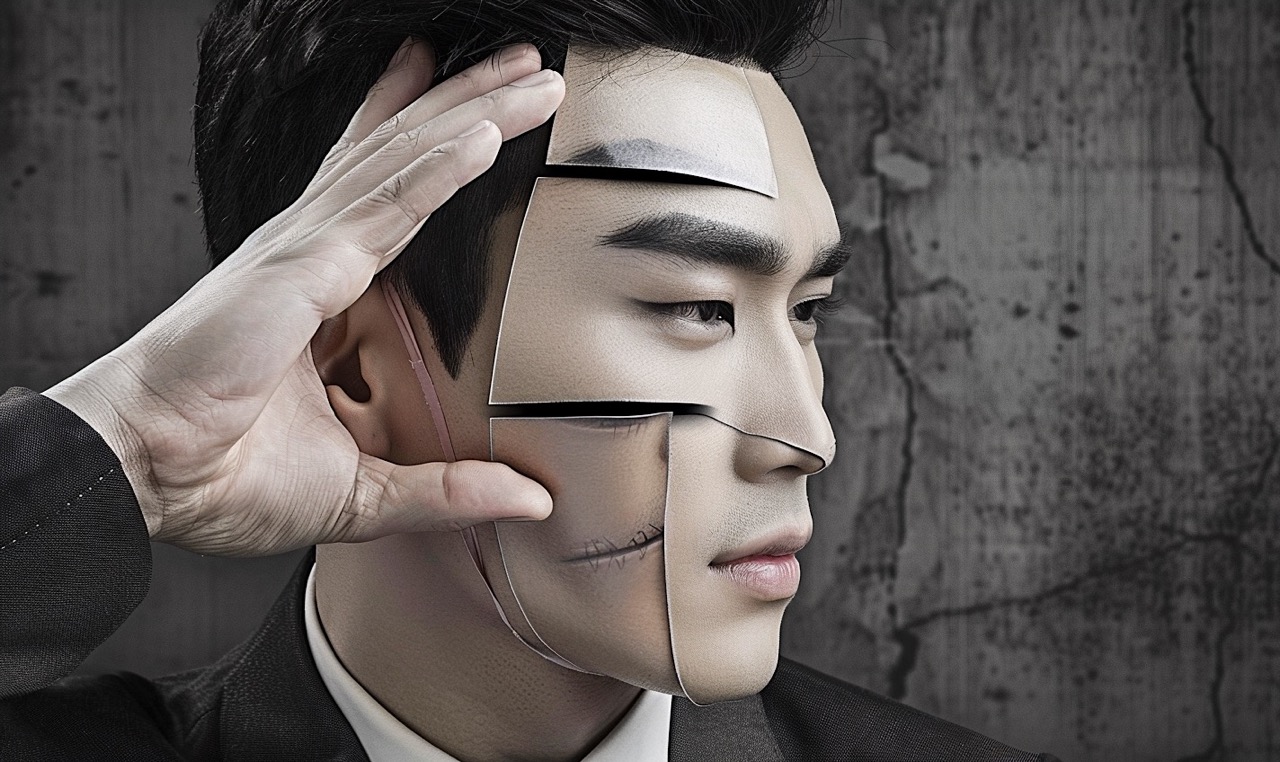Life
Why You Must Reinvent Your Identity to Reinvent Your Life

“Just be yourself” is one of the worst pieces of advice you can ever give to someone who desires to change their life.
It’s exactly their current self that is limiting their potential. It’s exactly their current self that isn’t producing the kind of desirable outcomes they want. It’s exactly their current self that is not competent enough to achieve their goals.
Einstein said it right, “Insanity is doing the same thing over and over again and expecting different results.” If you continue going through life with this current identity, you’re going to produce the exact same mediocre results you don’t want.
Success by definition is change. You cannot reach the next level unless you level up the person you are right now.
I still remember one of the most insightful lessons Tony Robbins has taught me: Identity is the most powerful force in influencing human psychology. Identity is what controls influence. It’s our human need to stay consistent with how we define ourselves.
So when you intend to do certain things but you fail to execute, it’s because your brain is saying things like, “Just forget about it, doing this kind of awesome thing is totally not you bro. It is NOT WHO YOU ARE! Give up buddy.” How self-sabotaging your brain sometimes can be.
“We know what we are, but not what we may be.” – William Shakespeare
So how can we stop ourselves from fitting into our social environment or the status quo? How can we change our beliefs as to what’s possible for us? How can we reinvent our identity so that it is there to support our goals, missions and visions in life?
Here’s the 2-Step process you need to reinvent your identity:
Step 1: Be aware of what identity you’re holding right now
Sometimes you may think doing certain things is totally you. Be careful with such thought. As Deepak Chopra suggested, you are NOT your thoughts, you are NOT your mind, you are NOT your body.
Very frequently, random negative thoughts are just going to pop up out of nowhere to attack your true potential. Your job is to be conscious enough to catch that moment and stop identifying that thing as you.
These spontaneous thoughts are often from our subconscious mind, which has been influenced, shaped and formed over many years based on our past experiences, outdated belief systems, and disempowering ideas implanted in us when we were young and didn’t even know what’s true or false.
Therefore, these so-called “original thoughts” you now think actually stem from misleading beliefs from people you didn’t even remember. I know it’s unfair and scary, but now that you are a responsible self-loving mature adult, it’s your job to slice those lies in half and dissociate your identity from them.
Step 2: Design a new identity that will be empowering to you that will get you what you want
You want to be as precise as possible to lay out the kind of beliefs, mindsets, behaviors and habits this new supportive identity must possess to take you where you want to go. Ask yourself, “What kind of person do I have to become in order to…?” Focus on the being part, not just the doing or having part.
Write these details down so that your reticular activation system knows where to scan for relevant evidence and reference experience to support your new belief system.
“The best way to find yourself is to lose yourself in the service of others.” – Gandhi
Changing your identity is scary to you. But it’s even scarier to people around you. So you probably will encounter lots of people who try to shut you down from any kinds of changes. They may do it out of love because they don’t want you to get hurt. They may do it out of fear because they are scared that you’ll not love them anymore once you’ve become a different person.
Understand that. Love them anyways. But be assertive about your mission to become a better, stronger, more capable person you’ve always desired. It’s a tough long battle to engage with. It’ll take months if not years to re-engineer the old you and become the You 2.0. But you must persist until you win.
Let go of the need to fit in, and accept the challenge of growing to become the best version of yourself you possibly can. I can’t wait seeing a brand new you!
What’s the current identity that you hold? Is it still serving you in the most empowering way? Leave your thoughts below!
Did You Know
How Skilled Migrants Are Building Successful Careers After Moving Countries
Behind every successful skilled migrant career is a mix of resilience, strategy, and navigating systems built for locals.

Moving to a new country for work is exciting, but it can also be unnerving. Skilled migrants leave behind familiar systems, networks, and support to pursue better job opportunities and a better future for their families. (more…)
Life
10 Research-Backed Steps to Create Real Change This New Year
This New Year could finally be the one where you break old patterns and create real, lasting change.

Every New Year, we make plans and set goals, but often repeat old patterns. (more…)
Life
9 Harsh Truths Every Young Man Must Face to Succeed in the Modern World
Before chasing success, every young man needs to face these 9 brutal realities shaping masculinity in the modern world.

Many young men today quietly battle depression, loneliness, and a sense of confusion about who they’re meant to be.
Some blame the lack of deep friendships or romantic relationships. Others feel lost in a digital world that often labels traditional masculinity as “toxic.”
But the truth is this: becoming a man in the modern age takes more than just surviving. It takes resilience, direction, and a willingness to grow even when no one’s watching.
Success doesn’t arrive by accident or luck. It’s built on discipline, sacrifice, and consistency.
Here are 9 harsh truths every young man should know if he wants to thrive, not just survive, in the digital age.
1. Never Use Your Illness as an Excuse
As Dr. Jordan B. Peterson often says, successful people don’t complain; they act.
Your illness, hardship, or struggle shouldn’t define your limits; it should define your motivation. Rest when you must, but always get back up and keep building your dreams. Motivation doesn’t appear magically. It comes after you take action.
Here are five key lessons I’ve learned from Dr. Peterson:
-
Learn to write clearly; clarity of thought makes you dangerous.
-
Read quality literature in your free time.
-
Nurture a strong relationship with your family.
-
Share your ideas publicly; your voice matters.
-
Become a “monster”, powerful, but disciplined enough to control it.
The best leaders and thinkers are grounded. They welcome criticism, adapt quickly, and keep moving forward no matter what.
2. You Can’t Please Everyone And That’s Okay
You don’t need a crowd of people to feel fulfilled. You need a few friends who genuinely accept you for who you are.
If your circle doesn’t bring out your best, it’s okay to walk away. Solitude can be a powerful teacher. It gives you space to understand what you truly want from life. Remember, successful men aren’t people-pleasers; they’re purpose-driven.
3. You Can Control the Process, Not the Outcome
Especially in creative work, writing, business, or content creation, you control effort, not results.
You might publish two articles a day, but you can’t dictate which one will go viral. Focus on mastery, not metrics. Many great writers toiled for years in obscurity before anyone noticed them. Rejection, criticism, and indifference are all part of the path.
The best creators focus on storytelling, not applause.
4. Rejection Is Never Personal
Rejection doesn’t mean you’re unworthy. It simply means your offer, idea, or timing didn’t align.
Every successful person has faced rejection repeatedly. What separates them is persistence and perspective. They see rejection as feedback, not failure. The faster you learn that truth, the faster you’ll grow.
5. Women Value Comfort and Security
Understanding women requires maturity and empathy.
Through books, lectures, and personal growth, I’ve learned that most women desire a man who is grounded, intelligent, confident, emotionally stable, and consistent. Some want humor, others intellect, but nearly all want to feel safe and supported.
Instead of chasing attention, work on self-improvement. Build competence and confidence, and the rest will follow naturally.
6. There’s No Such Thing as Failure, Only Lessons
A powerful lesson from Neuro-Linguistic Programming: failure only exists when you stop trying.
Every mistake brings data. Every setback builds wisdom. The most successful men aren’t fearless. They’ve simply learned to act despite fear.
Be proud of your scars. They’re proof you were brave enough to try.
7. Public Speaking Is an Art Form
Public speaking is one of the most valuable and underrated skills a man can master.
It’s not about perfection; it’s about connection. The best speakers tell stories, inspire confidence, and make people feel seen. They research deeply, speak honestly, and practice relentlessly.
If you can speak well, you can lead, sell, teach, and inspire. Start small, practice at work, in class, or even in front of a mirror, and watch your confidence skyrocket.
8. Teaching Is Leadership in Disguise
Great teachers are not just knowledgeable. They’re brave, compassionate, and disciplined.
Teaching forces you to articulate what you know, and in doing so, you master it at a deeper level. Whether you’re mentoring a peer, leading a team, or sharing insights online, teaching refines your purpose.
Lifelong learners become lifelong leaders.
9. Study Human Nature to Achieve Your Dreams
One of the toughest lessons to accept: most people are self-interested.
That’s not cynicism, it’s human nature. Understanding this helps you navigate relationships, business, and communication more effectively.
Everyone has a darker side, but successful people learn to channel theirs productively into discipline, creativity, and drive.
Psychology isn’t just theory; it’s a toolkit. Learn how people think, act, and decide, and you’ll know how to lead them, influence them, and even understand yourself better.
Final Thoughts
The digital age offers endless opportunities, but only to those who are willing to take responsibility, confront discomfort, and keep improving.
Becoming a man today means embracing the hard truths most avoid.
Because at the end of the day, success isn’t about luck. It’s about who you become when life tests you the most.
Change Your Mindset
The Four Types of Happiness: Which One Are You Living In?
Most people chase success only to find emptiness, this model reveals why true happiness lies somewhere else.

In a world driven by rapid technological growth and constant competition, many people unknowingly trade joy for achievement. (more…)
-

 Shift Your Mindset4 weeks ago
Shift Your Mindset4 weeks ago11 E’s That Define Every Great Leader And Why Most People Miss Them
-

 Did You Know4 weeks ago
Did You Know4 weeks agoThe Success Patterns You Inherited (And Didn’t Notice)
-

 Entrepreneurs3 weeks ago
Entrepreneurs3 weeks agoThe Essential Skills Every Entrepreneur Needs In 2026
-

 Business4 weeks ago
Business4 weeks agoThe Hidden Money Pit in Your Operations (and How to Use It)
-

 Change Your Mindset3 weeks ago
Change Your Mindset3 weeks agoHow to Turn Your Mind Into Your Greatest Asset (Instead of Your Enemy)
-

 Change Your Mindset2 weeks ago
Change Your Mindset2 weeks agoThe Silent Skill That Makes People Respect You Instantly
-

 Life2 weeks ago
Life2 weeks ago10 Research-Backed Steps to Create Real Change This New Year
-

 Tech2 weeks ago
Tech2 weeks agoWhat’s in a Name? How to Get Your Domain Right


























7 Comments